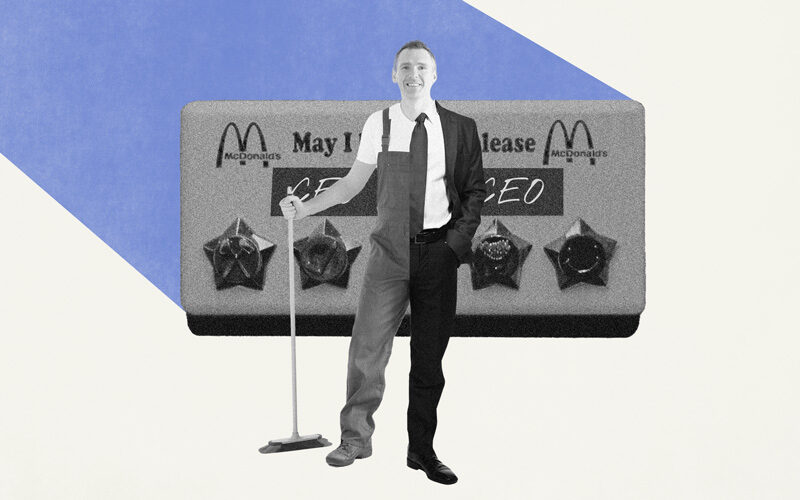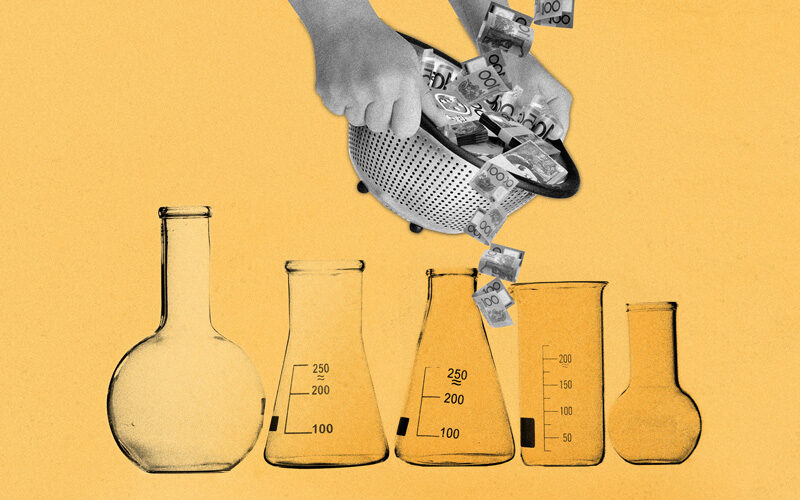Startups entering high-end consumer spaces are facing a paradox.
As the planet heats up and affinity for luxury items cools, the definitions of “luxurious” and “sustainable” are changing. And in some ways, they’re still in conflict.
The “new order” of Australian D2C brands may have an answer.
Replacing static, inaccessible price points with tiered subscription models is giving a new breed of “elevated” brands the flexibility to cater to multiple segments. Elevated experiences are replacing elevated materials. And the way consumers acquire social capital is changing. Instead of glossy materialism, they’re filling their social feeds with good social deeds.
Queensland-born Fable has found a way to bridge ethical veganism – historically perceived as preachy – with luxury by substituting meat with shiitake mushrooms instead of plain old tofu or corn. A well-placed collab with the highly credible celeb chef Heston Blumenthal didn’t hurt either.
Melbourne-based (and now globally operating) Who Gives A Crap bridged recyclability with luxury by making their plastic-free loo roll packaging Instagrammable. There’s a sentence we never thought we’d say.
Old-school luxury is based on exclusivity and scarcity – stuff that can’t be mass produced or cheaply bought, like diamonds, lobster, and silk.
It’s also based on the brand new and the untarnished – the “made just for you”. Forbes went as far as to say privileged buyers “reject the sentiment of social harmony”. They only want it if only they can have it.
In contrast, sustainability is based on abundance and renewability. Infinite energy sources, circularity, regenerative forests. Products tend to have elements of the old and previously used.
Then there’s the huge gap in messaging. Sustainability tells you to change your behaviour. Luxury tells you you can have whatever you want.
In 2022, luxury startups can’t survive without being sustainable (or at least “sustainable”). But sustainable startups are having a hard time being luxury.
Common ground
In the eyes of a lot of consumers, lux and eco are still two separate markets.
And it’s not the well-heeled rejecting the hippie stuff. It’s the other way round. Some highly eco-conscious buyers will actively reject luxury, and the price points that come with it.
But there are a two key tenets that unite the groups:
Longevity, durability, looking after things to make them last. A Patek Philippe is designed to be bought once and worn by several generations. Slow fashion brands are beginning to offer mending services to extend the lives of clothes. Even built-for-obsoletion tech like iPhones are getting more reparable, thanks in part to regulation, and in part to the growing right to repair sentiment in Australia and around the world.
Not being mugged off. The only people who hate being hoodwinked as much as the poor are the rich. The age of information means it’s harder for brands to lie. Even unsinkable ships like Hermes and Louis Vuitton are being literally pulled apart by leather tanners on TikTok and the real cost structures of their products exposed.
Gone are the days of producing functionally identical products to those a fraction of the price and covering it up with marketing.
Examples are abundant.
La Mer Crème de la Mer ($145) has 96% of the same ingredients as Nivea Crème ($5).
Lab-grown diamonds are often larger, higher quality, and less expensive than mined diamonds.
Juicero failed because it tried to charge $699 for a fruit blender by pretending it was somehow different or superior to other blenders.
Teaching old dogs new tricks
Another big part of luxury branding is heritage, provenance, and history.
Decades-old brands often have decades-old policies. Although most incumbents will be pivoting to better sustainability practices, changes are slow and protracted.
Thanks to the expenses of cleaner energy, kinder materials, and replacing entire supply chains, these changes may be unwelcome at best, or anti-brand at worst.
In the beauty industry, luxury has long been marked out by heavy layers of non-recyclable composite packaging – glass over thick plastic or aluminium, wrapped up in more layers of weighted cardboard for further shelf appeal.
In FMCG, luxury drinks have always been packaged in thick, crystal clear glass which requires completely new glass cullet to manufacture. For a producer like Grey Goose to swap that crisp white bottle for something murky or tinted is to get rid of a highly identifying brand mark.
Standing for everything = standing for nothing
Then there’s brand dilution.
Luxury and sustainability are “big” attributes or personalities. Most successful brands align with just one brand personality type – excitement, sophistication, sincerity, competence, or ruggedness.
If you know what you’re doing, you might have an 80/20 or 90/10 mix. High-end car makers get away with this best, often building on something like 80 competence, 20 sophistication. Think Audi’s “vorsprung durch technik”. The famous line means “progress through technology” (competence) and it had the confidence not to translate it from German (sophistication).
Land Rover and Harley Davidson – as well as toolmakers like Dewalt – mix in a different personality trait – 80 competence, 20 ruggedness.
But for new or small startups without cross-sector operations (or elite marketing teams), singularity performs best. A brand that’s both luxury and eco-friendly straddles a 50/50 mix of sophistication and sincerity. The point just gets lost.
It’s these elite level marketing teams that are best equipped to do both. Luxury jeweller Cartier, for example, has completely rebranded, launching Cartier Philanthropy to fund women’s social and economic development, sustainable ecosystems, and emergency response in some of the poorest parts of the world.
These kinds of pivots are based on millions of pounds worth of market research and the astronomical rates of world-class branding experts.
Companies without the marketing dollars must get strategic. As Michael E Gerber outlines in The E-Myth, founders should ask themselves:
- What elements of your product signify luxury/elevation in a tangible way?
- How do the non-tangibles like brand, pricing model, and customer service back that up?
- What systems do you have in place to hit that standard every single time?
Sustainable buyers may not quite be ready to welcome luxury, but they like an elevated experience as much as the next consumer.
A brand doing this well is Yogi Tea – a sustainable, socially-led producer, but it fills each teabag tag with a “zen” quote, and greets you at the first online interface with a question: “What are you looking for today? Relaxation, inspiration, energy, surprise me?”.
The Sophie’s choice of branding
If you’re struggling to decide whether sustainability or luxury should lead your branding efforts:
- Put authenticity first. Which do you really believe in, and what do you do best? Sustainability might be the popular choice, but luxury still has its place.
- Consider “premium” rather than luxury. Think tiered offerings (premium, standard, basic) in the spirit of inclusiveness and accessibility. Broader market, easy to add value for fee-paying customers.
- A huge part of brand buy-in is simply being known and recognised. Naturally this is the one thing startups don’t have. What can you do to get known and remembered?
- If you can’t make luxury work, think elevation, creativity, and experience instead.
Until sustainability stops being a branding exercise and starts being standard practice, startups should be both, but market one.











